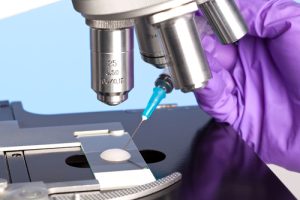Best Semen Analysis Center In Raipur
Home Best Semen Analysis Center In Raipur

Best Semen Analysis Center
What is semen Analysis?
Semen analysis, also known as a sperm count test, analyzes the health and viability of the sperm. Semen is the fluid containing sperm (plus other sugar and protein substances) that’s released during ejaculation. A semen analysis measures three major factors of sperm health:
- the number of sperm (sperm concentration)
- the shape of the sperm (morphology)
- the movement of the sperm (sperm motility)
Complete Semen Analysis-CSA
A CSA represents the most complete evaluation of ejaculated sperm from a semen sample. Typically 2 to 3 semen analyses are required to get a true baseline evaluation of sperm since sperm counts can vary significantly. Before testing, 2 to 5 days of absence is required.
The results of the semen analysis are the main component in male fertility testing. It is almost always the first fertility test ordered for males and oftentimes the only test needed. While it is useful, please note that the values of a normal semen analysis are only guidelines and are not a guarantee that significant male factor issues are not present.
The World Health Organization (WHO) has defined male infertility on the basis of the concentration of sperm in semen. While concentration is useful, many other factors need to be measured and have clinical significance. Most male fertility specialists believe that semen analysis is only a primary test and that future testing will allow for much more in-depth testing of sperm. A man is considered to be fertile by WHO criteria if he has at least 15 million sperm per ml.
WHO Guidelines for a “normal” semen analysis
- Volume: 1.5 ml to 5.0 ml
- Concentration (number of sperm present per ml of the ejaculate): greater than 15 million/ml
- Motility (percentage of sperm moving): 50% or more
- Forward Progression (of the moving sperm the strength of their forward movement): 2+ or more
- Morphology (percentage of normally shaped sperm): 30% or more normal shapes
Why Undergo Semen Analysis?
Test for male infertility:
A semen analysis test is recommended when couples are having problems getting pregnant. The test will help a doctor to determine the male’s fertility. The analysis will also help to find out the problem of infertility using another test keeping semen analysis as a baseline test. The analysis will also help determine if low sperm count or sperm dysfunction is the reason behind infertility.
Complete Semen Analysis-CSA
A CSA represents the most complete evaluation of ejaculated sperm from a semen sample. Typically 2 to 3 semen analyses are required to get a true baseline evaluation of sperm since sperm counts can vary significantly. Before testing, 2 to 5 days of absence is required.
The results of the semen analysis are the main component in male fertility testing. It is almost always the first fertility test ordered for males and oftentimes the only test needed. While it is useful, please note that the values of a normal semen analysis are only guidelines and are not a guarantee that significant male factor issues are not present.
The World Health Organization (WHO) has defined male infertility on the basis of the concentration of sperm in semen. While concentration is useful, many other factors need to be measured and have clinical significance. Most male fertility specialists believe that semen analysis is only a primary test and that future testing will allow for much more in-depth testing of sperm. A man is considered to be fertile by WHO criteria if he has at least 15 million sperm per ml.
WHO Guidelines for a “normal” semen analysis
- Volume: 1.5 ml to 5.0 ml
- Concentration (number of sperm present per ml of the ejaculate): greater than 15 million/ml
- Motility (percentage of sperm moving): 50% or more
- Forward Progression (of the moving sperm the strength of their forward movement): 2+ or more
- Morphology (percentage of normally shaped sperm): 30% or more normal shapes
Why Undergo Semen Analysis?
Test for male infertility:
A semen analysis test is recommended when couples are having problems getting pregnant. The test will help a doctor to determine the male’s fertility. The analysis will also help to find out the problem of infertility using another test keeping semen analysis as a baseline test. The analysis will also help determine if low sperm count or sperm dysfunction is the reason behind infertility.
How does a semen analysis work?
A man masturbates to produce a semen sample. This is the preferred method because it provides a clean sample. Since sperm counts vary from day to day, you may need to provide more than one sample spaced out a few weeks apart.
Healthcare providers use research-based methods to handle and test the semen. Going to a lab that specializes in semen analysis ensures you receive accurate results.
This includes labs that:
- Are part of a fertility clinic.
- Perform a high volume of semen analyses.
